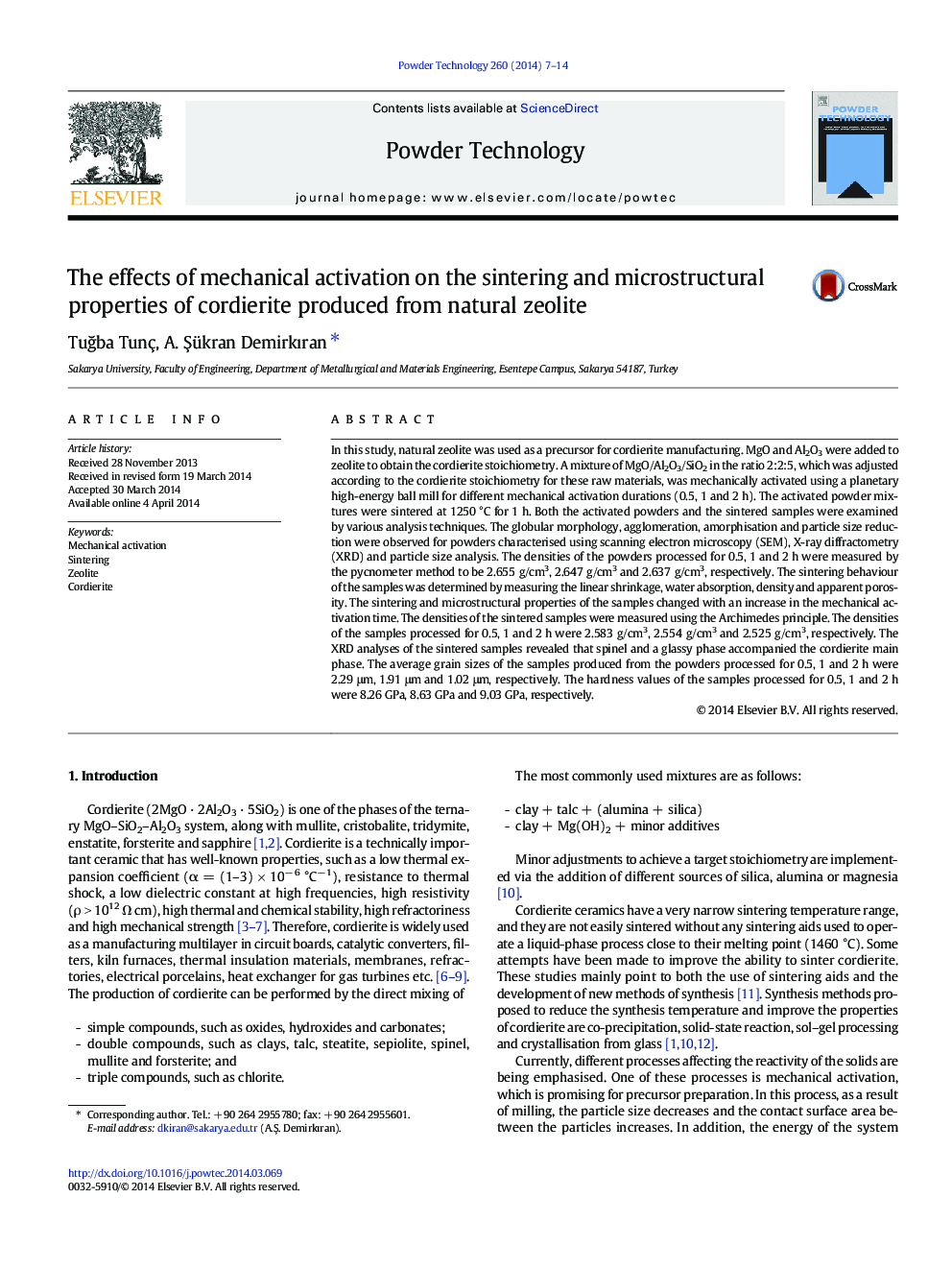| Article ID | Journal | Published Year | Pages | File Type |
|---|---|---|---|---|
| 235817 | Powder Technology | 2014 | 8 Pages |
•A very dense material with high content of cordierite from zeolite was produced.•Production was performed at a temperature as low as 1250 °C.•The mechanical activation process affected sintering behaviour of the samples.•More fine-grained structure occurred with increasing mechanical activation time.•The hardness of the samples increased with increasing mechanical activation time.
In this study, natural zeolite was used as a precursor for cordierite manufacturing. MgO and Al2O3 were added to zeolite to obtain the cordierite stoichiometry. A mixture of MgO/Al2O3/SiO2 in the ratio 2:2:5, which was adjusted according to the cordierite stoichiometry for these raw materials, was mechanically activated using a planetary high-energy ball mill for different mechanical activation durations (0.5, 1 and 2 h). The activated powder mixtures were sintered at 1250 °C for 1 h. Both the activated powders and the sintered samples were examined by various analysis techniques. The globular morphology, agglomeration, amorphisation and particle size reduction were observed for powders characterised using scanning electron microscopy (SEM), X-ray diffractometry (XRD) and particle size analysis. The densities of the powders processed for 0.5, 1 and 2 h were measured by the pycnometer method to be 2.655 g/cm3, 2.647 g/cm3 and 2.637 g/cm3, respectively. The sintering behaviour of the samples was determined by measuring the linear shrinkage, water absorption, density and apparent porosity. The sintering and microstructural properties of the samples changed with an increase in the mechanical activation time. The densities of the sintered samples were measured using the Archimedes principle. The densities of the samples processed for 0.5, 1 and 2 h were 2.583 g/cm3, 2.554 g/cm3 and 2.525 g/cm3, respectively. The XRD analyses of the sintered samples revealed that spinel and a glassy phase accompanied the cordierite main phase. The average grain sizes of the samples produced from the powders processed for 0.5, 1 and 2 h were 2.29 μm, 1.91 μm and 1.02 μm, respectively. The hardness values of the samples processed for 0.5, 1 and 2 h were 8.26 GPa, 8.63 GPa and 9.03 GPa, respectively.
Graphical abstractFigure optionsDownload full-size imageDownload as PowerPoint slide
